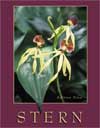Organization of the Text
A relatively conventional sequence of botanical subjects is included. Chapters 1 and 2 cover introductory and background information; Chapters 3 through 11 deal with structure and function; Chapters 12 and 13 introduce meiosis and genetics. Chapter 14 discusses plant propagation and biotechnology; Chapter 15 introduces evolution. Chapter 16 presents a six-kingdom system of classification; Chapters 17 through 23 stress, in phylogenetic sequence, the diversity of organisms traditionally regarded as plants, and Chapter 24 deals with ethnobotanical aspects and information of general interest pertaining to sixteen major families of flowering plants. Chapters 25 and 26 constitute an overview of the vast topic of ecology, although ecological topics and applied botany are included in most of the preceding chapters as well. Some of these subjects are broached in anecdotes that introduce the chapters, while others are mentioned in the ecological review summaries and in the human and ecological relevance sections (with which most of the chapters in the latter half of the book conclude.) Aids to the Reader
A chapter outline, review questions, discussion questions, and additional reading lists are provided for each chapter. New terms are defined as they are introduced, and those used more than once are boldfaced and included in a pronunciation glossary. The use of the scientific names throughout the body of the text has been held to a minimum, but a list of the scientific names of all organisms mentioned is given in Appendix 1. Appendix 2 deals with biological controls and companion planting; Appendix 3 lists wild edible plants, poisonous plants, medicinal plants, hallucinogenic plants, spices, tropical fruits, and natural dye plants. Appendix 4 gives horticultural information on houseplants; and information on the cultivation and nutritional value of vegetables is also included. Appendix 5 provides metric equivalents.
Reading level and amount of information is presented at an accessible level for non-science majors throughout the text.
Traditional, micro-macro approach (cells to ecology) to organizing chapters.
Comprehensive Online Learning Center offers practice quizzing, hot links to relevant sites, and much more |



 2003 McGraw-Hill Higher Education
2003 McGraw-Hill Higher Education

 2003 McGraw-Hill Higher Education
2003 McGraw-Hill Higher Education